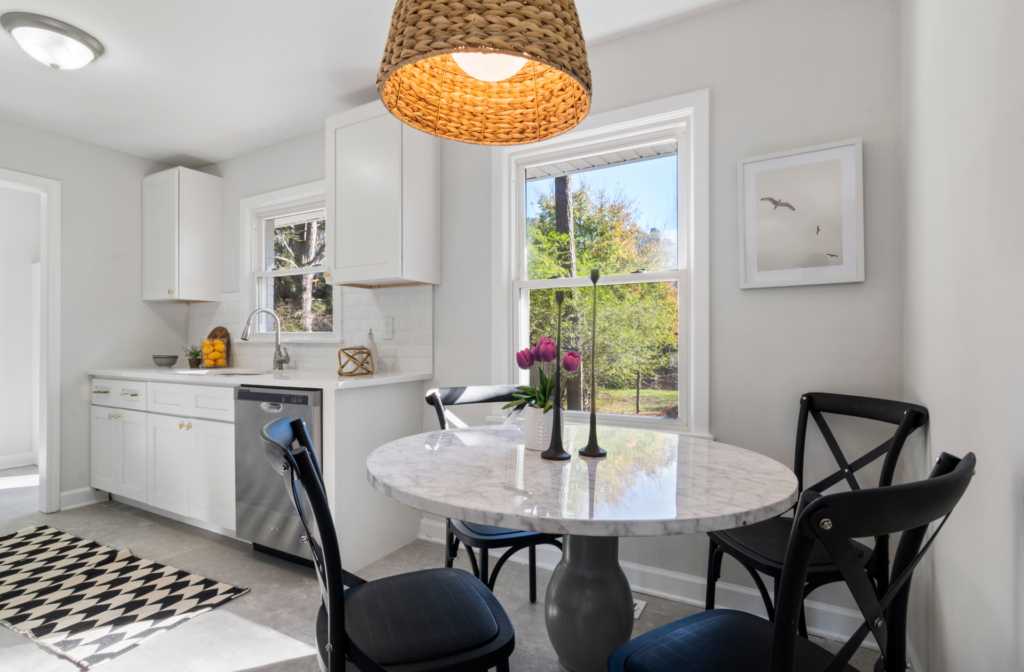Table of Contents
When Will Housing Prices Drop?
The housing market is shifting as we settle into the new year, with home prices stabilizing compared to the volatile activity of recent years. While national home prices are slightly down from 2023, high mortgage rates challenge buyers. Experts predict that significant price drops may not happen in 2025, as interest rates and housing supply remain key factors.
However, eager buyers have strategies to consider. Buying now with plans to refinance later, starting with a smaller or more affordable home, or exploring modular housing can pave the way to homeownership. As interest rates gradually decrease, opportunities may arise, but competition and prices could climb. The best time to buy remains when you’re financially prepared and find a home that fits your needs. If you’re looking to plan out your real estate goals in 2025, I’m a text, call, or email away!1

More Starter Homes Are Hitting the Market
Speaking of rising opportunities, starter homes are making a comeback, offering first-time buyers a more affordable path to homeownership than in recent years. After a prolonged period of limited options and rising prices, inventory is finally increasing, especially in the entry-level market. Realtor.com reports a 26.2% rise in homes for sale compared to last year, marking 13 months of growth and the highest inventory since December 2019. Notably, starter homes have seen the most significant increase, providing an exciting opportunity for buyers seeking affordability.
Finding your perfect starter home can be easier with a proactive approach. Stay updated on local listings by regularly checking online platforms and community resources. Focus on homes that fit your budget and meet your needs by setting clear priorities and financial limits. Additionally, keep track of important details like documentation and deadlines to ensure a smooth and efficient homebuying process.2
Did You Know?
The top 5 states with the lowest climate risks are Ohio, Washington, Indiana, Pennsylvania, and Michigan. These locations are less vulnerable to extreme weather events like hurricanes, wildfires, and heatwaves. Their cooler climates and geographic features make them appealing options for those seeking long-term safety amidst changing environmental conditions.3

Is Your DTI Ready for Homeownership?
If you plan on getting a mortgage this year, it requires you to understand your finances, particularly your debt-to-income (DTI) ratio. This metric compares your total monthly debt payments to your gross monthly income, helping lenders assess your ability to handle mortgage payments. A healthy DTI ratio, typically 35% or less, increases your chances of approval, though some lenders may allow up to 45% or more.
To calculate your DTI, divide your monthly debt payments by your gross income and multiply by 100. Following the 28/36 rule can help you budget: spend no more than 28% of your income on housing and 36% on total debts. If your DTI is high, consider reducing debt using strategies like the snowball or avalanche method, which prioritize small balances or high-interest debts, respectively. By improving your financial situation, you can confidently navigate the mortgage process.4

Why America Has So Many Big Houses
Ever wonder why America has bigger homes compared to other countries? American homes have grown significantly larger over the last century, even as family sizes have shrunk. This trend is due to the shifting perceptions of homes as investments, cost-effective construction methods, and the availability of land in many regions. The median home size has more than doubled since 1920, reaching 2,491 square feet by 2020, while the average household size decreased from 4.3 to 2.5 people.
However, attitudes are beginning to shift. Rising home prices and affordability challenges have led to declining demand for larger homes. In 2024, the average desired home size dropped to its lowest in a decade. Builders are responding, with many now constructing smaller homes to meet changing preferences. This evolving market may offer more opportunities for buyers seeking affordable, modestly sized homes that better align with today’s needs.5

How Long Does It Take to Buy a House?
Buying a home is an exciting journey that requires thoughtful preparation and understanding of the process. From pre-approval to closing, each step brings you closer to turning your homeownership dream into reality. On average, buying a home takes about 44 days, but timelines can vary depending on factors like market conditions, loan type, and readiness.
To stay on track as much as possible, start by getting pre-approved, a quick step that defines your budget and shows sellers you’re a serious buyer. Next, enjoy the home search, which can take days or months based on your preferences and market competitiveness. Once you find your dream home, making and negotiating offers brings you closer to ownership. The mortgage process, including underwriting and closing, ensures all financial and legal requirements are met. With my professional guidance and tools like our down payment assistance programs, you can confidently have an efficient homebuying timeline—your dream home is within reach!6
Sources: 1 finance.yahoo.com; 2 keepingcurrentmatters.com; 3 realtor.com; 4 cnbc.com; 5 thehustle.co; 6 rwmloans.com



